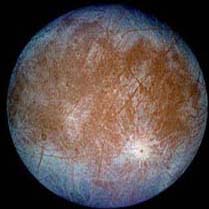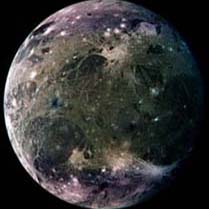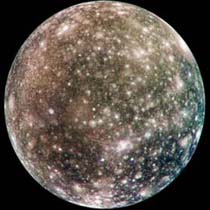|
|
Planet Jupiter
Tweet
Celestron, Meade, Orion Telescopes
Diameter: 89,000 miles (143,000 km)
Average Distance from Sun: 484 million miles (779 million km)
Orbital Period: 12 years
Rotation Period: 9.93 hours
telescope: 63
Maximum Temperatures: 24,000C (43,000F) (Core)
Minimum Temperatures: -145C (-230F) (Cloud Tops)
Gravity: 20.87 m/s2 (2.14 x Earth's Gravity)
Density: 1.33 g/cm3 (24% Earth's Density)
Mass: 1.8987 x 1027 kg (318 x Earth's Mass)
Volume: 1.4255 x 1015 km3 (1316 x Earth's Volume)
Atmosphere: 86% Hydrogen, 14% Helium, 0.3% Methane, 0.026% Ammonia, 0.003% Hydrogen deuteride, 0.0006% Ethane, 0.0004% water.
Average Distance from Sun: 484 million miles (779 million km)
Orbital Period: 12 years
Rotation Period: 9.93 hours
telescope: 63
Maximum Temperatures: 24,000C (43,000F) (Core)
Minimum Temperatures: -145C (-230F) (Cloud Tops)
Gravity: 20.87 m/s2 (2.14 x Earth's Gravity)
Density: 1.33 g/cm3 (24% Earth's Density)
Mass: 1.8987 x 1027 kg (318 x Earth's Mass)
Volume: 1.4255 x 1015 km3 (1316 x Earth's Volume)
Atmosphere: 86% Hydrogen, 14% Helium, 0.3% Methane, 0.026% Ammonia, 0.003% Hydrogen deuteride, 0.0006% Ethane, 0.0004% water.
Facts & Information
Celestron, Meade, Orion Telescopes
Planet Jupiter
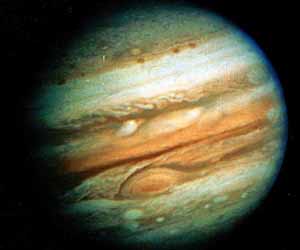
Image taken by Voyager 1 on its approach to Jupiter in 1979
Jupiter's red spot

You could fit three Earths inside Jupiter's giant red spot
Planet Jupiter Facts
- Jupiter is the largest planet in the solar system. Its diameter is 88,846 miles (142,984 km), more than 11 times that of Earth, and about one-tenth that of the sun.
- It would take more than 1,000 Earths to fill up the volume of the giant planet.
- When viewed from Earth, Jupiter appears brighter than most stars. It is usually the second brightest planet after Venus.
- Jupiter is the fifth planet from the sun. Its average distance from the sun is about 484 million miles (779 million km), more than five times Earth's distance.
- Jupiter is a giant ball of gas and liquid with little, if any, solid surface.
- The red spot (left) is a giant storm which has raged for hundreds of years.
- Astronomers witnessed a spectacular event in July 1994, when 21 fragments of a comet named Shoemaker-Levy 9 crashed into Jupiter's atmosphere. The impacts caused tremendous explosions, some scattering debris over areas larger than the diameter of Earth.
Orbit, Atmosphere & Temperature
Orbit
Jupiter travels once around the Sun every 12 years and spins on its own axis every 10 hours compared to 24 on Earth, making it the fastest rotating planet in the Solar System.
Atmosphere
The atmosphere of Jupiter is composed of about 86 percent hydrogen, 14 percent helium, and tiny amounts of methane, ammonia, phosphine, water, acetylene, ethane, germanium, and carbon monoxide.
Temperature
The temperature at the top of Jupiter's clouds is around -145C (-230F). Deeper below the clouds the temperate reaches 21C (70F). Near the planet's center the temperature is hotter than the surface of the Sun!
telescope, Name and Life
Celestron, Meade, Orion Telescopes

The volcanic moon Io orbiting Jupiter
telescope & Origin of Name
Jupiter has 62 telescope, 16 of which have a diameter of at least 6 miles. The four main telescope of Jupiter are Io, Europa, Ganymede and Callisto,
all discovered in 1610 by Galileo and referred to as the "Galilean telescope" (see below).
Jupiter was named by the Romans after their King of Gods.
Life on Jupiter
Amazing as it may seem some scientists have speculated that life on Jupiter is possible. This would occur beneath the cloud cover where room temperature conditions exist, these lifeforms
would be airborne although this theory is thought to be highly speculative.
The Galilean telescope
Celestron, Meade, Orion Telescopes
|
Jupiter Moon Io
|
|
Jupiter Moon Europa
|
|
Jupiter Moon Ganymede
|
|
Jupiter Moon Callisto
|
Jupiter's Magnetic Field
Celestron, Meade, Orion Telescopes
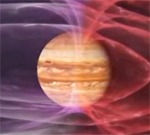
Images and Video
Celestron, Meade, Orion Telescopes
Aurora at Jupiter's Pole


Voyager 1 approaching Jupiter
Jupiter with Io in foreground


Future and Past Missions to Jupiter
Celestron, Meade, Orion Telescopes
10.
Europa Jupiter System Mission
 Launch: 2020
Launch: 2020Agency: NASA/ESA
A joint venture by NASA and the ESA (Europe) will study the Jovain System using two
separate spacecraft. They will map Jupiter's atmosphere and magnetic field as
well as studying its interactions with the Galilean telescope.
9.
Juno
 Launch: August 2011
Launch: August 2011Arrival: August 2016
Agency: NASA
Will survey Jupiter from polar orbit, studying the planet's interior. Will determine the amount of global water and ammonia present in the atmosphere and whether Jupiter has an ice rock core.
8.
New Horizons
 Launch: January 2006
Launch: January 2006Arrival: January 2007
Agency: NASA
Observed Jupiter over 5 months in early 2007 on its way to Pluto.
7.
Cassini-Huygens
 Launch: October 1997
Launch: October 1997Arrival: December 2000
Agency: NASA/ESA (Europe)
Captured images of Jupiter and its telescope on a flyby on its way to Saturn.
6.
Ulysses
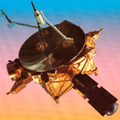 Launch: October 1990
Launch: October 1990Arrival: February 1992
Agency: NASA
Studied Jupiter's strong magnetic field and radiation levels on its way to the Sun.
5.
Galileo
 Launch: October 1989
Launch: October 1989Arrival: December 1995
Agency: NASA
Galileo was the first spacecraft to deploy a probe into an outer planet’s atmosphere. When the probe plunged into Jupiter's clouds it sent back information about
temperature, wind speeds and pressure before finally succumbing to the intense pressure. Galileo also studied
Jupiter's telescope and made many discoveries before being deliberately
destroyed by sending it on a collision course with the gas giant, this was done in order to avoid any possibility of the spacecraft contaminating Europa’s salty ocean.
4.
Voyager 2
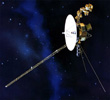 Launch: August 1977
Launch: August 1977Arrival: April 1979
Agency: NASA
As part of its "Grand Tour" of the solar system Voyager 2 took 18,000 images of the planet during its flyby and discovered 3 new telescope.
3.
Voyager 1
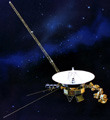 Launch: September 1977
Launch: September 1977Arrival: August 1979
Agency: NASA
Took more than 18,000 images of the planet and its telescope during its fly by.
2.
Pioneer 11
 Launch: April 1973
Launch: April 1973Arrival: December 1974
Agency: NASA
The second spacecraft to explore the outer solar system, it flew within 34,000 km (21,000 miles) of Jupiter's clouds. Pioneer 11 studied the planet's magnetic field, atmosphere
and took pictures of Jupiter and its telescope. Instruments were shut down on Pioneer 11 in September 1995.
1.
Pioneer 10
 Launch: March 1972
Launch: March 1972Arrival: December 1973
Agency: NASA
The first spacecraft to explore the outer solar system, it flew within 200,000 km (124,000 miles) of Jupiter's cloud tops. Pioneer 10 detected the tremendous
radiation levels as it passed the gas giant. Contact was lost in April 2001 as the spacecraft headed out of the solar system in the general direction of a red star
called Aldebaran.
Telescopes

